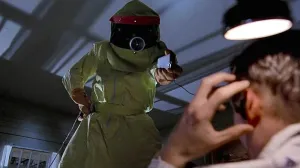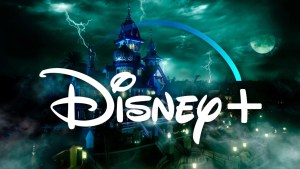
Big things are happening at DC Comics. Big things have been happening at DC Comics for the past couple of years. Ever since the publisher decided to leave the New 52 behind and change course with Rebirth, they have seen continual success on almost every front of their line. The imprint titles from Young Animal and The Wildstorm have been applauded. Sales have been up with many successful new creative teams, and many more coming soon. Events have also provided much more excitement than those at the competition as well. It’s simply a great time to be at DC Comics and the future appears even brighter. However, it also seems like there may be red skies on that horizon.
Videos by ComicBook.com
In the build to Crisis On Infinite Earths, titles from across DC Comics all featured red skies that pointed to the coming disaster and rewriting of continuity. While DC Comics has not officially announced a new crisis, eagle eyed fans are already getting the sense that something very big is on its way. The real questions aren’t whether a new crisis will arrive, but what will lead to it. We have our own theories and all of the signs at this moment point to the current incarnation of Justice League landing right in the center of whatever comes next.

The Need For Another Crisis
Before looking at Justice League, it’s worth establishing that there is definitely another crisis on its way. It goes beyond tradition with Crisis On Infinite Earths being a seminal text for all DC Comics fans and semi-regular repetition in stories like Zero Hour, Infinite Crisis, and Flashpoint. The last big line wide rewriting of continuity resulted in the New 52, a mostly cohesive new version of the DC universe that held together for 5 years until the Rebirth era. At its end the cracks began to show as a young Superman was replaced by an older one and the original Wally West was staged to make a comeback. It was clear to readers everywhere that New 52 continuity was going out the window, but there was no definitive replacement presented. Instead, there were only hints about outside influences connected to upcoming comics like The Flash, Justice League Vs. Suicide Squad, and Doomsday Clock.
While the one-shot that launched Rebirth framed all of these elements as part of a single story, the narrative itself hasn’t been solidified. While more and more hints about how a crisis might occur or what changes may be made are dropped, there have been no stories that actually redefined the status quo. As the New 52 crumbles away, there is only a hint of what comes next. That makes the need for a central event that redefines continuity all the more important. Even longtime fans and regular readers are starting to perceive the cracks in the DC Comics line as it currently stands with many stories appearing to take place in different worlds altogether. While it would be possible to use the concept of Hypertime to explain this away, it seems that the publisher wants to have a single cohesive continuity. Therefore, another crisis is inevitable.

The Rising Action In Scott Snyder‘s Stories
While there has been a lot happening throughout DC Comics building to this next crisis, the centerpiece has emerged from Scott Snyder’s contributions to DC Comics across the past year. Justice League falls into place as the third part of a trilogy of rising action. That three-part story begins with Dark Nights: Metal, an event that spun itself out of many plot threads in his acclaimed New 52 run on Batman with Greg Capullo. It was in “Metal” that Snyder took many of his favorite contributions to the DC Comics mythose and wove them together into an epic tale that connected Batman to the very origins of the universe while also providing a lot of new toys for future creators. It wasn’t just elements from Batman that were present though. “Metal” also took the rebirth of the DC multiverse in The Multiversity and both tied it closer to current continuity and expanded upon it with a dark Multiverse. In a metanarrative “Metal” took many of the most important elements for any impending crisis and forged them into a single story.
“Metal” ends with the breaking of the Source Wall, a barrier of impossible power, which led to the second part of this cycle: Justice League: No Justice. In “No Justice” the heroes of Earth are forced to contend with the ramifications of what just happened. While the Green Lantern Corps is struggling to hold the Source Wall together, four ancient forces of existence are reawakened to judge and consume planets. Again, the heroes manage to save the day, but only by destroying another universal constant when Entropy is killed to save Earth. The consequences of this action are not entirely clear, but it is crystalline that the universe is falling apart by the end of “No Justice.” All of that laid the groundwork for the new Justice League series.

Wheels Within Wheels
Justice League has taken a widescreen approach to the team, one so big that the first issue involves the destruction of the moon. It is about enormous problems and the heroes that have to conquer the impossible. The first arc alone introduces a new Legion of Doom, a primordial Lantern Corps, and even worse threats, all of them framed in the slowly fracturing universe caused by cracks in the Source Wall and death of Entropy. It is clearly all part of one giant story building to the biggest of all possible problems, the sort of disaster enshrined in Crisis On Infinite Earths.
The team itself is also purposefully designed to play on various threads of rewriting reality and the changes made by the New 52. Martian Manhunter’s central role on the team pushes back on his revisions in Stormwatch less than a decade ago. Meanwhile, both The Flash and Hawkgirl have their own stories related to the revision of continuity. The recent “Flash War” written by Snyder protege Joshua Williamson plays heavily on the repercussions of Flashpoint and their mutability, while the new Hawkman series references multiple continuities. The Ultraviolet Lanterns build upon universal changes in the Green Lantern franchise, as well. Justice League is both the continuation of a crisis-like prologue and the axis around which so many other related stories swing.
While the exact nature and outcome of the impending crisis isn’t clear, one thing is obvious: Justice League is the launchpad for whatever happens next. With stakes that are constantly rising and a collection of all the characters most closely tied to DC Comics’ continuity, it will be the series where the metaphorical red skies of a continuity rewrite first appear. It’s only a matter of time.








